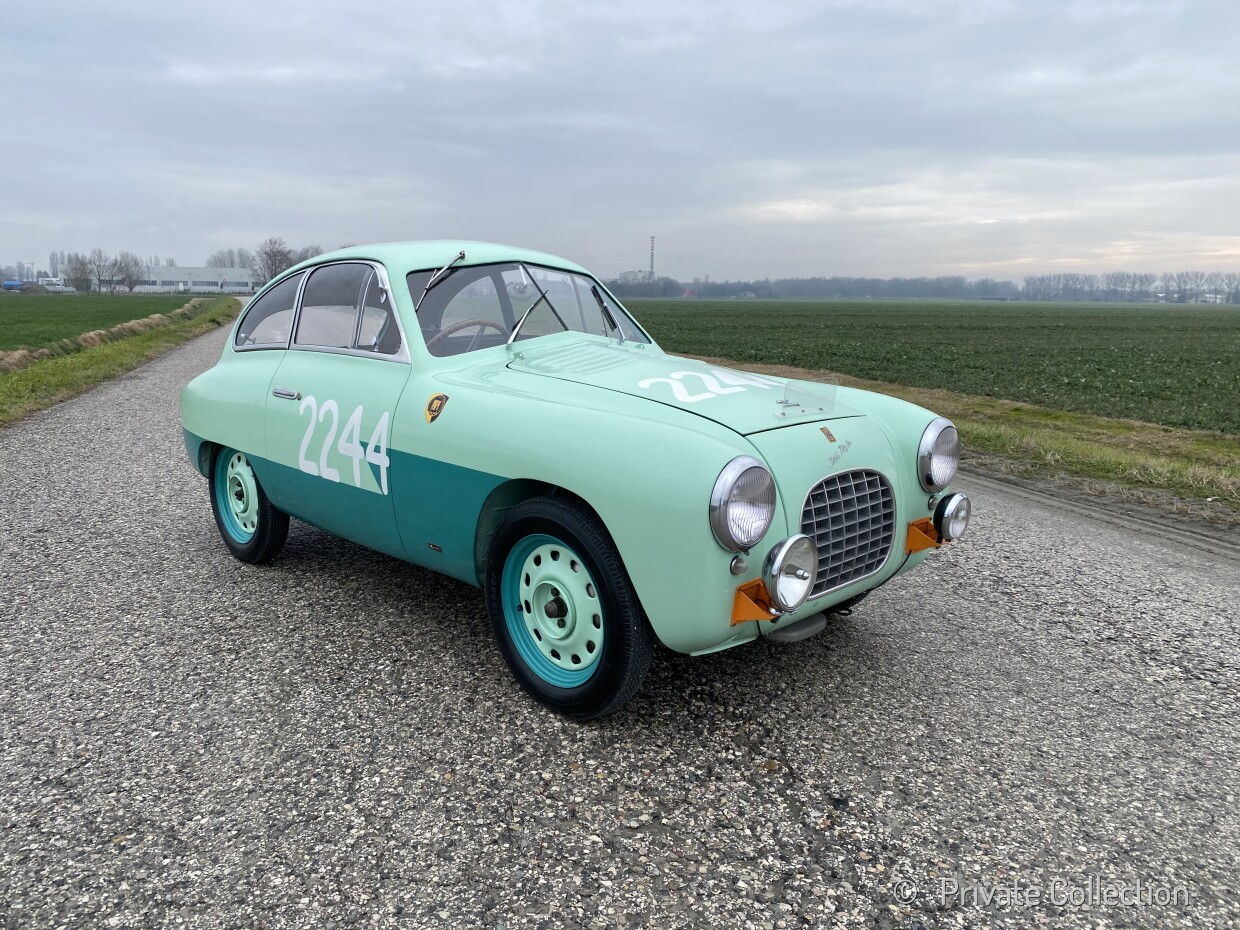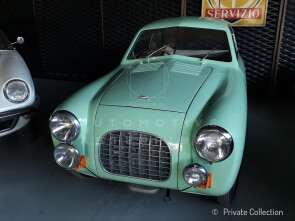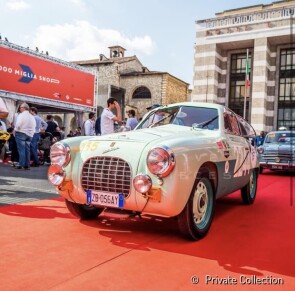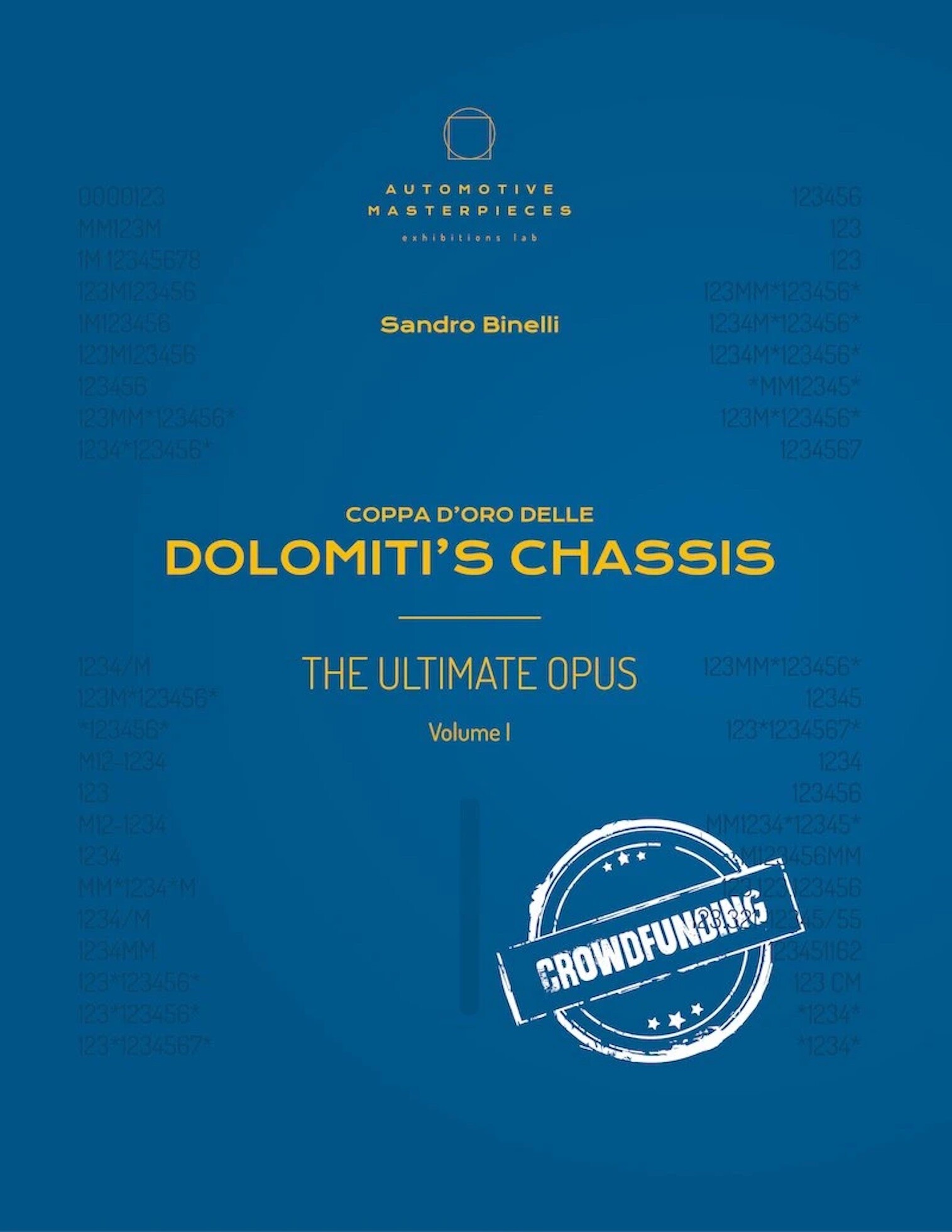
1951 Fiat 750 derivata MM Gran Turismo
ON/OFF
Why am I an Automotive Masterpiece?
G. Team cars
Scuderia Sant'Ambroeus (IT)
L. Limited edition cars
no. 8 manufactured. supposed number
The small "Topolino" is one of the world’s best known cars. Created in the 1930s, it was a car designed to be minimal and economical, but it seems that everyone wanted to use it to race. The origins of the car are interesting; in 1930 Benito Mussolini spoke with Giovanni Agnelli about the imperative need to produce a low-cost car for the masses; it would be good "propaganda", followed by Adolf Hitler's Germany, where Ferdinand Porsche was called to put Volkswagen, "people's car", into production. The car was to cost less than Lit. 5,000: a difficult task. The FIAT chief designer, Antonio Fessia, entrusted the task to a young Dante Giacosa, who took over the previous Balilla project by simplifying every detail; the body lines were inspired by the FIAT 1500 with a tapered hood. Giacosa's aeronautical experience inspired the lightened two-rail chassis, with the engine (569 cc, 4 cylinders, side valve) mounted cantilevered to improve space. Everyone called the car "Topolino", for its size and muzzle similar to a mouse, or more precisely to Walt Disney's Mickey Mouse. In any case, the official name remained FIAT 500. The final price of Lit. 8,900 was higher than the target and very high for an ordinary worker, but the car sold. In 1938 the quarter elliptical rear leaf springs (the so-called " balestrino" or " balestra corta") became normal semi-elliptical leaf springs to improve load capacity. In 1948 the vehicle saw major changes with the "500 B" model, featuring overhead valves, improvements to the chassis and new heating. A new version became available, the "Giardiniera Belvedere", a small "woody" station wagon. In 1949 there was the final change, with the "500 C" model. The front part of the bodywork took on a more modern style, the engine received an aluminum cylinder head. The "Giardiniera Belvedere" became "metallic". The Topolino was often modified, little or radically, for races. Production of the sedan lasted until 1954, replaced by the FIAT 600, while the Giardiniera was produced until 1955. Nearly 520,000 cars were produced.
The Topolino was often modified, from mildly to radically, for the races. Workshop, body shops, small factories and artisans built their ultimate version. Some just cut the roof, someone else built barchetta roadsters on tubular chassis, while the engine grew up to the 750-cc category limit to the most possible power. At the Mille Miglia, for example, 95% of the 750 cc Sport cars were registered as Fiat, although the Turin-based company never built roadsters, barchette or racing coupés. In 1947, as a gift for his graduation at Bocconi University of Milan, Elio Zagato, Ugo's first-born son, received an open-top sports car based on a Fiat 500 B chassis. This car represented the beginning of his career as a gentleman driver and as a manager of the family company. The birth of the Gran Turismo category, conceived in 1949 by Count Giovanni Lurani, journalist Giovanni Canestrini and Elio himself changed the world of automotive competition: the category comprised cars with sports coachwork and a production chassis. To take part in that competitions there should be 30 examples built. Most important cars’ chassis wore Zagato GT bodies: the Zagato business boomed. Taking the chassis of the Fiat 500 C as a starting point, Ugo and Elio Zagato built the Fiat 750 Zagato, one of the most successful creations in the International Gran Turismo category. With a series of well-applied modifications, the Milanese coachbuilders were able to obtain surprising performance from their car and above all to convince enthusiasts of the 750's qualities; both with a string of notable victories and proving their car's endurance. The 750 Zagatos, in their first (1951) racing season, imposed themselves on very fast circuits, such as Monza, as well as on alpine roads of the Coppa delle Dolomiti. And to complete the statements: the Mille Miglia, the Milano Sanremo, the Coppa della Toscana and the Circuito di Caracalla. Among the drivers who achieved excellent performances with the small GT, we find well-known names of the time, such as Elio Zagato, Franco Martinengo, Alessandro Zafferri. If the line of the 750 GT is not as daring as in the "Panoramica", it differs little from it and is clearly Zagato to the core and ends in a kaon-tail. Not even an edge in the whole shape, if not the two Z of the Zagato name. As for the mechanics, on the Fiat chassis, the Topolino engine was profoundly revised. The block is in cast iron and the cylinder head in light alloy. The compression ratio is 7.5 and the power is around 28 hp at 4900 rpm. Claimed rpm and horsepower were "conservative" because the engine revved very high.
Chassis No. 500C*311129* has the same Zagato factory as its first owner, therefore, being destined for a racing career, it was born as a "Works" car. It ran its first important race in May 1952, under the aegis of the Scuderia Sant’Ambroeus; it's the Mille Miglia, and the car qualifies 2nd in class. It was led by Sandro Zafferri who, with Angelo Crivelli, took it to the most important Italian events of the 1952 season, with excellent placements in the class. In 1953 the car raced with Giuliano Ronzoni and returned to the Mille Miglia (17th in class). His competitive activity with Ronzoni was intense, which continued in 1954. In 1955, the car was presented at the Mille Miglia for the third time, with Tarcisio and Ambrogio Silva; he will finish 8th in class. The story has been traced since 1956, the owners are known but, apparently, the racing adventure seems to be over (barring future discoveries). The car was restored over time, the last time in 2021 in its “middle” livery, with the low, checkered grille and the two-tone color scheme forming a Z. During the restoration it was fitted a Facetti engine with serial number not stamped as was the original one that is missing. The small Zagato was back on the roads of the Mille Miglia in 2023.







